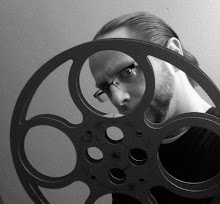
Martin Scorsese’s HUGO is about a lot of different things; it’s a story about a boy’s love for his father, it is about childhood friendship and adventure, it is about redemption and self-forgiveness. On top of that, it is Scorsese’s statement to the world concerning the history and preservation of film. His first venture into the 3D world is the setting he chooses for telling all of these stories, and the blending is a stumble here, and a triumph there.
Hugo’s (Asa Butterfield) father (Jude Law) is killed in a museum fire, and the boy is sent to live with his drunken uncle (Ray Winstone), who maintains the inner-workings of all the clocks in a Paris train station. When the uncle disappears, Hugo is left alone to run the clocks by himself while avoiding capture from the stations chief inspector (Sacha Baron Cohen). Hugo sort-of befriends George (Ben Kingsley), who has an interesting connection to movie history, and his god-daughter Isabelle (Chloe Grace Moretz). Hugo looks to repair an automaton; a mechanical man discovered by his father in the museum’s attic, which when operational may or may not reveal stunning secrets that involve all characters and their lives.
HUGO’s beginnings set up the film as a story all about a boy’s love for his father. Repairing the automaton is Hugo’s last connection to his dead pop, and his motivations are clearly spelled out and loaded with emotion. Once the automaton starts to click, the movie (literally) switches gears. The focus shifts from Hugo and his love for his dad and over to Isabelle’s god-father George. The switch, while necessary for Scorsese’s intentions for the film, drops the emotion from the overall story and relegates Hugo to a solve-the-mystery movie.
Most of HUGO seems scattered; spending a lot of time on the many characters, some of which feels unnecessary. But where HUGO really shines is when Scorsese switches gears for a third time and gets into a specific and important chapter in movie history. The recreations of historical movies such as A TRIP TO THE MOON (1902) are a joy to watch, and Scorsese pours his love of movie history all over the place. HUGO’s third switch is a history lesson in film, and it is an important one.
The 3D is hit or miss. It looks dazzling in some places, and un-noticeable in others. HUGO feels like it should be seen in 3D, as it is a story dealing with the magic of the movies. It’s a clever effort, but in the practical sense it’s an annoyance; the dimness of those blasted glasses dulls the vibrancy of the magnificent-looking world HUGO exists in.
Scorsese directs some great performances out of everyone, especially from his younger cast; younger audiences will connect right away with Hugo and Isabelle. Older audiences will be entertained as well, providing they can get by the slow pacing and switching storylines. HUGO succeeds a lot more than it stumbles.
BOTTOM LINE: See it

No comments:
Post a Comment
A few rules:
1. Personal attacks not tolerated.
2. Haters welcome, if you can justify it.
3. Swearing is goddamn OK.